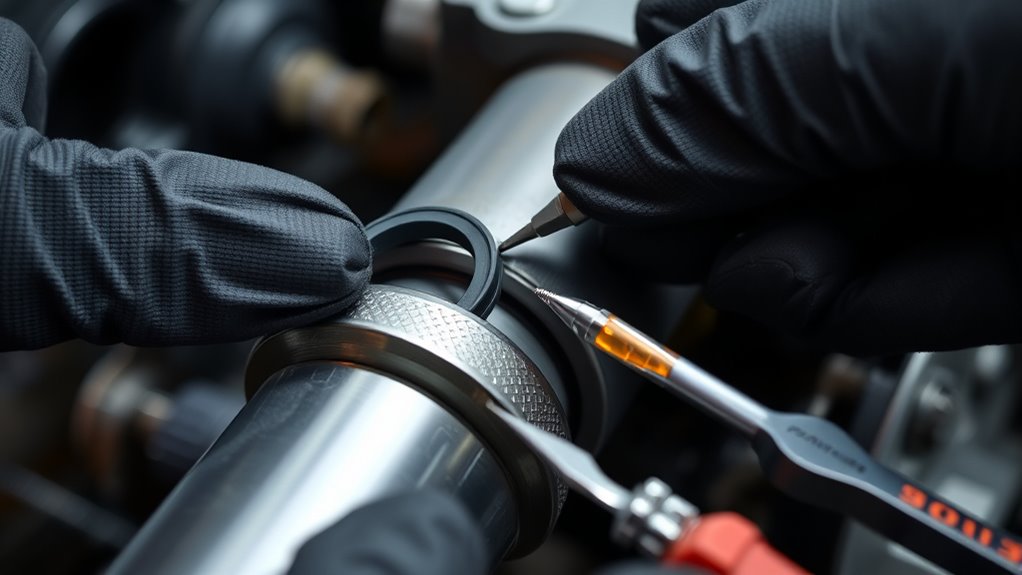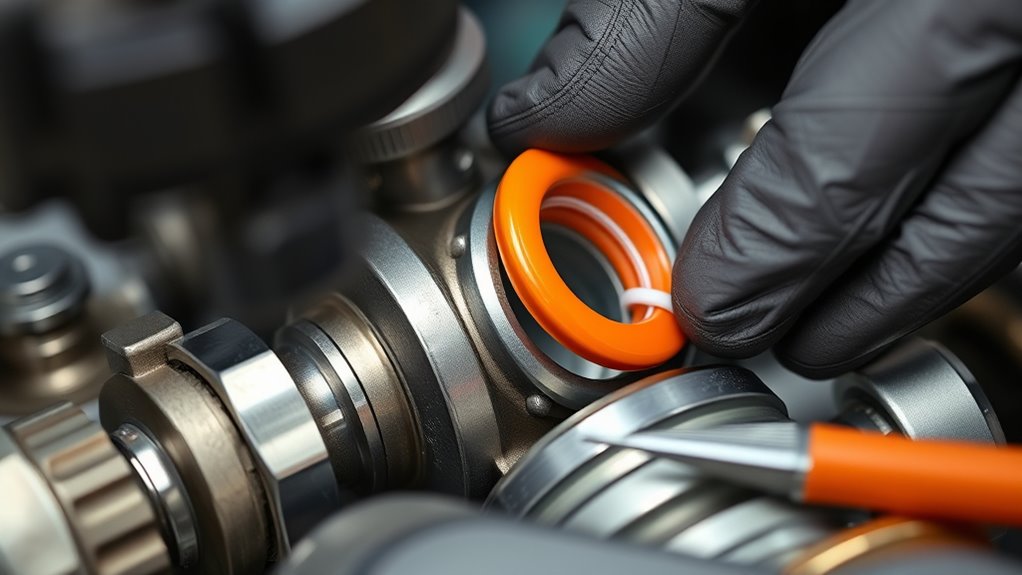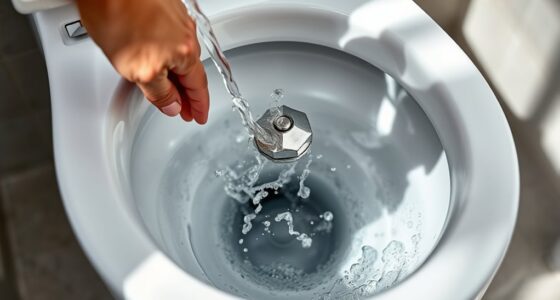To troubleshoot O-ring failures, start by inspecting the seal for damage and remove it carefully using proper tools to prevent tearing. Clean the groove thoroughly and select an appropriately compatible replacement. Lubricate the new O-ring with a suitable lubricant to ease installation and reduce friction. Carefully position the seal without overstretching and ensure it sits evenly in the groove. If you keep these tips in mind, you’ll learn more about making certain reliable, long-lasting seals.
Key Takeaways
- Inspect O-rings for damage, deformation, or wear before replacement to ensure proper fit and function.
- Choose compatible lubricants to ease installation and prevent damage, ensuring they match the O-ring material and application.
- Use proper tools and techniques—avoid twisting or stretching—to seat the O-ring evenly in the groove.
- Replace damaged or incompatible O-rings promptly to prevent leaks and further equipment damage.
- Regularly maintain and inspect seals to identify early signs of failure and ensure long-term seal integrity.

O-ring failures can cause costly equipment downtime and safety issues, making it essential to identify and address the root causes quickly. One of the primary factors influencing O-ring longevity is material compatibility. If you’re using an O-ring made from a material that doesn’t suit the operating environment, it can lead to premature degradation. For example, rubber compounds like nitrile are excellent for petroleum-based fluids but may swell or crack when exposed to certain chemicals or extreme temperatures. Similarly, silicone O-rings offer high heat resistance but may not perform well with oils or solvents. To prevent failures, you need to carefully select the right material that matches your application’s specific conditions. This means checking chemical compatibility charts and temperature ratings before installation. Overlooking this step can result in swelling, cracking, or hardening of the seal, ultimately causing leaks or complete failure.
Installation techniques also play a vital role in preventing O-ring failures. Proper installation ensures the seal functions effectively without damage. You should always inspect the O-ring before installation, looking for any nicks, cuts, or deformities that could compromise its integrity. When installing, lubricate the O-ring with a compatible lubricant to reduce friction and ease seating. Using the correct installation tools is equally important—avoid sharp or pointed objects that can tear the seal. Instead, opt for smooth, rounded tools or your fingers, coated with the appropriate lubricant, to gently seat the O-ring into its groove. Proper groove design and ensuring the O-ring is seated evenly helps prevent uneven stress, which can cause premature wear or extrusion. Additionally, avoid stretching the O-ring excessively during installation, as this can weaken its structure. Remember, a well-installed O-ring with appropriate lubrication and correct groove dimensions will perform reliably longer, reducing the risk of failure.
Furthermore, selecting the right material for your O-ring based on chemical and temperature compatibility is fundamental to ensuring long-term performance and avoiding costly replacements. Regular inspections and maintenance further support the longevity of your seals, allowing you to catch potential issues before they escalate. Ultimately, investing in proper material selection and installation techniques isn’t just about preventing failures; it’s about ensuring the safe, efficient operation of your equipment.
Frequently Asked Questions
Can O-Rings Be Reused After Failure?
You shouldn’t reuse o-rings after failure because it compromises their o ring longevity and seal integrity. Reusing o-rings can lead to leaks or failure in your system, as they may be damaged or deformed. Instead, replace them with new seals to guarantee peak performance. Proper lubrication during installation helps extend their lifespan, but once an o-ring fails, it’s best to discard and replace it for reliable sealing.
What Materials Are Best for High-Temperature O-Rings?
When selecting materials for high-temperature O-rings, opt for options like Viton, FKM, or Kalrez, known for their superior temperature resistance and durability. These materials guarantee compatibility with harsh chemicals and extreme heat, preventing failures. By prioritizing materials with proven temperature resistance and compatibility, you keep your seals secure, stable, and resilient, even under the most demanding conditions. Trust these tough, thermally resilient options to protect your equipment effectively.
How Often Should O-Rings Be Inspected?
You should inspect your O-rings regularly, ideally following a set maintenance schedule. Typically, it’s best to check them every three to six months, depending on their working environment and usage. Consistent inspection helps catch signs of wear, cracking, or deformation early. By maintaining a routine inspection frequency, you guarantee your O-rings stay effective, preventing leaks and costly failures in your system.
Are There Eco-Friendly Alternatives to Traditional O-Rings?
Yes, there are eco-friendly alternatives to traditional O-rings. You can choose O-rings made from biodegradable materials like silicone or natural rubber, which break down more easily in the environment. Additionally, look for options produced through sustainable manufacturing processes that minimize waste and energy use. These eco-conscious choices help reduce your environmental footprint while maintaining effective sealing performance.
How Does Compression Affect O-Ring Longevity?
You can’t keep pushing your luck with compression; too much puts unnecessary stress on your O-ring, speeding up seal deformation and shortening its lifespan. Proper compression guarantees the seal fits snugly without excessive stress, helping it last longer. Too little compression leaves gaps, while too much causes damage. Finding the right balance minimizes compression stress, preserving your O-ring’s integrity and extending its service life.
Conclusion
By carefully inspecting, lubricating, and replacing your O-rings, you can prevent most failures. While some believe that using petroleum-based lubricants causes degradation, recent studies suggest silicone lubricants are safer and extend seal life. Trusting this evidence, you’ll find that proper maintenance not only saves time and money but also enhances system reliability. So, stay vigilant, follow best practices, and remember—well-maintained O-rings are key to trouble-free operation.









